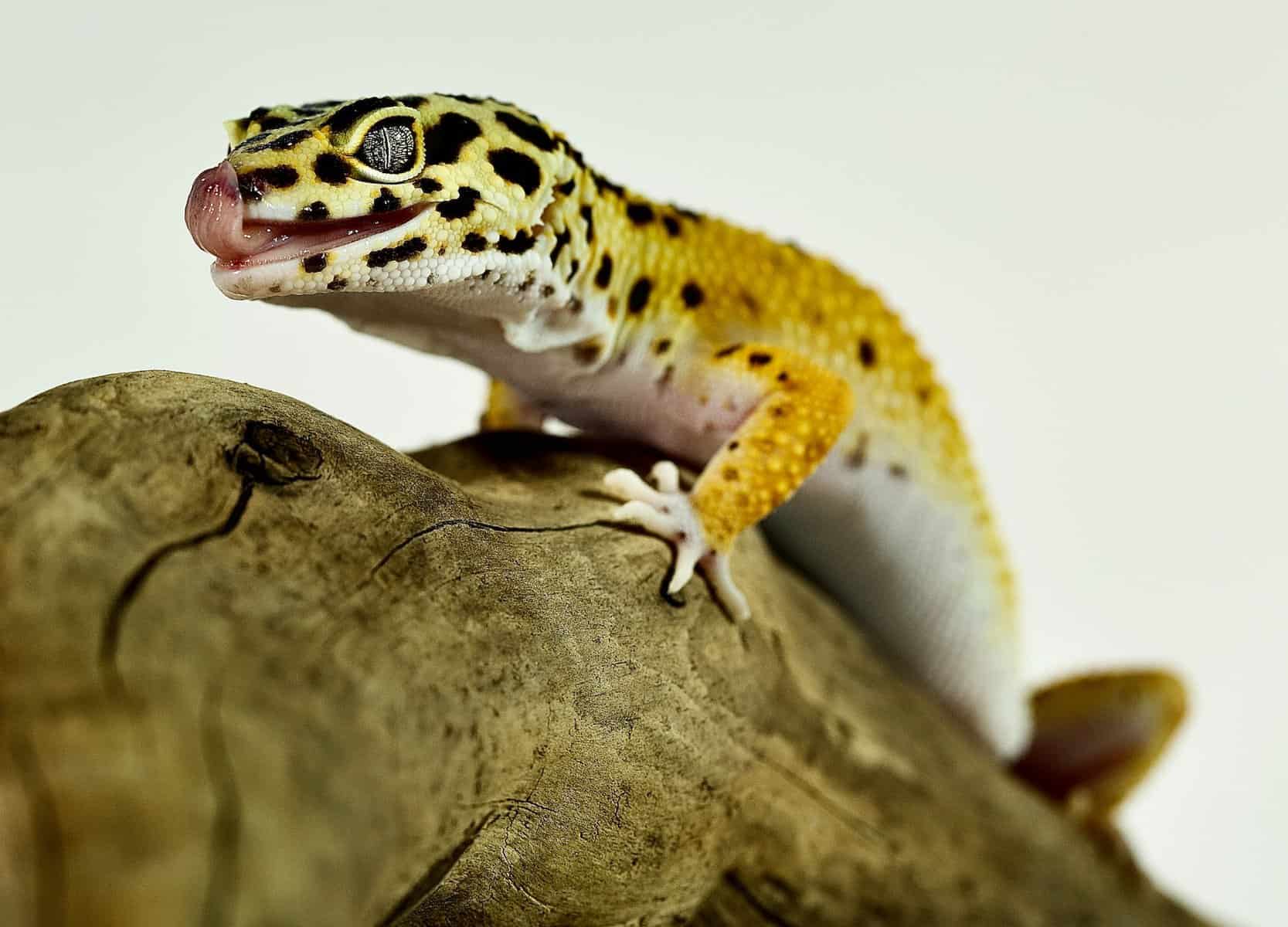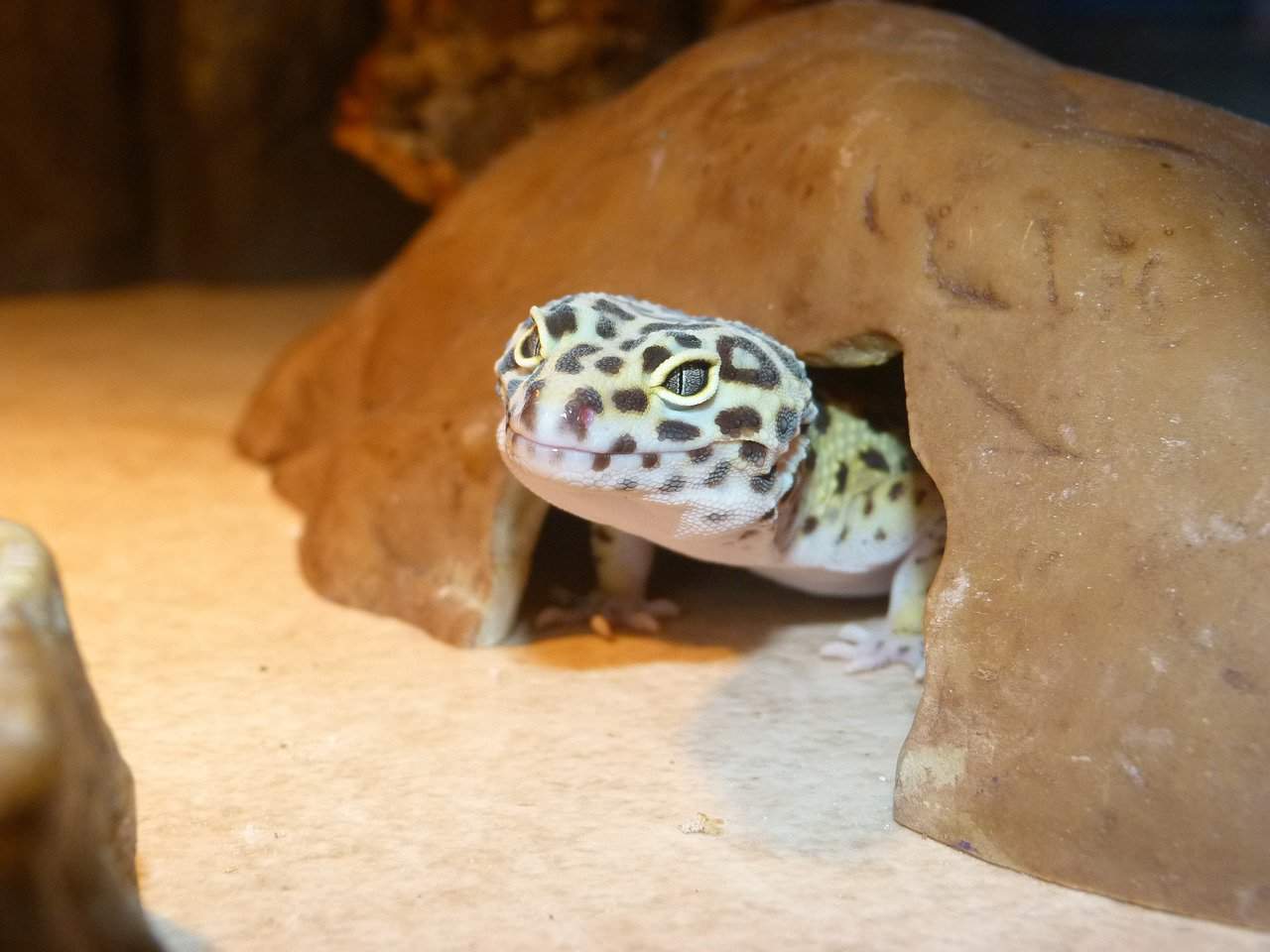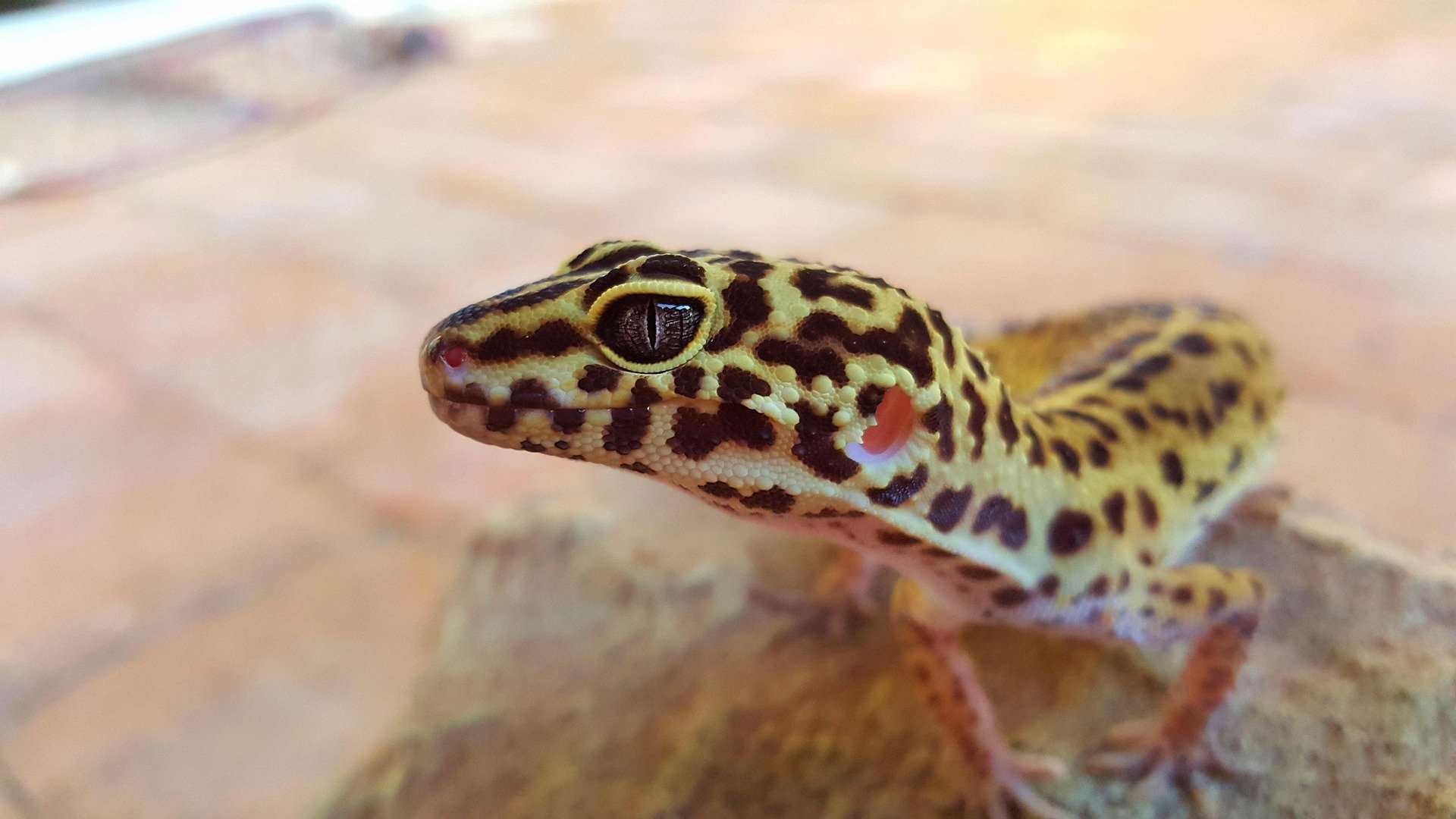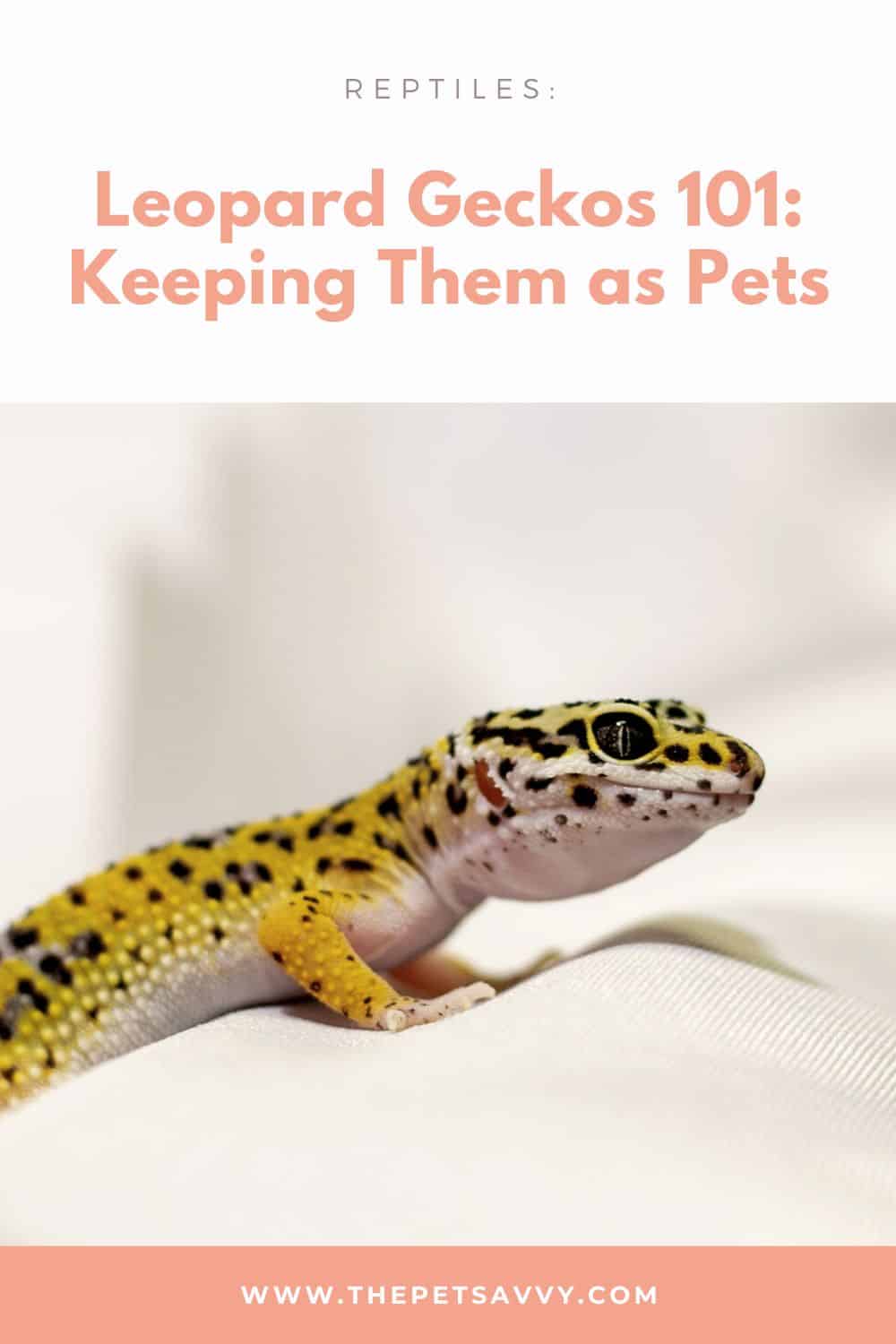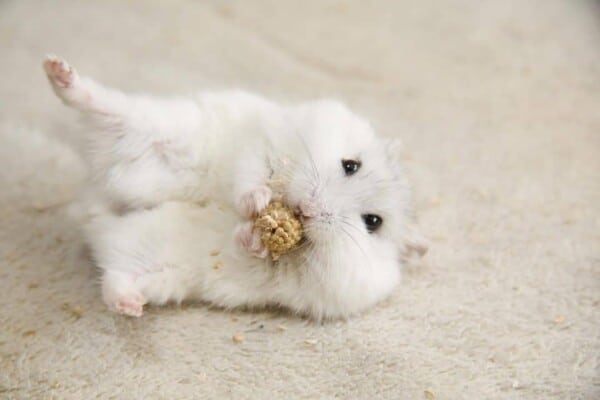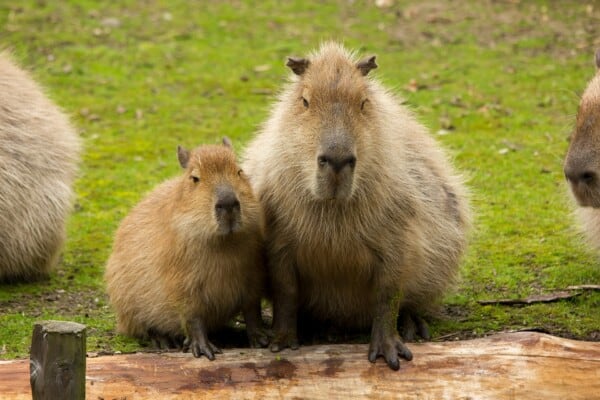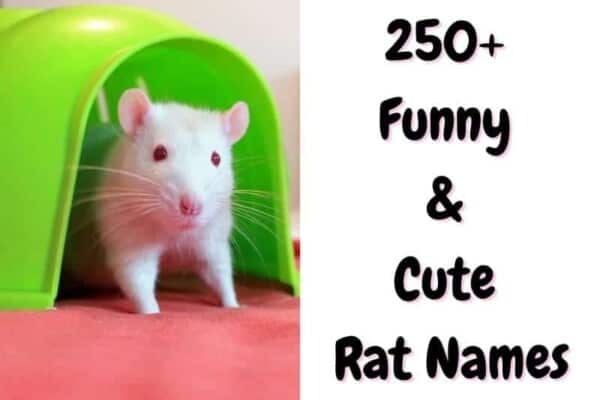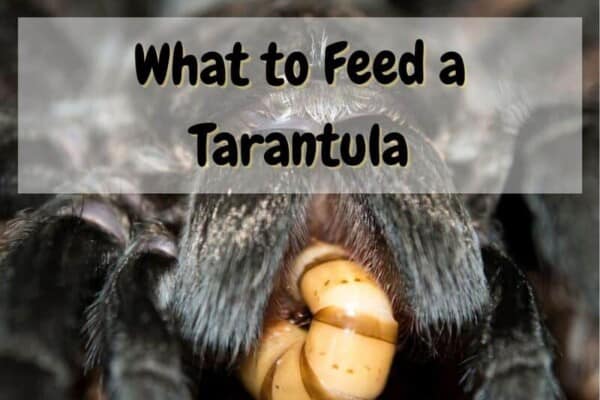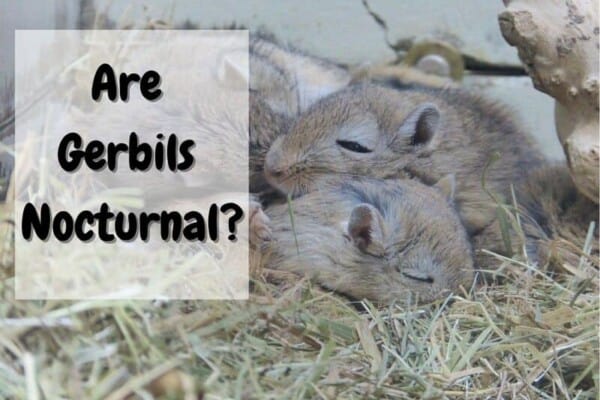Leopard geckos are very popular beginner choices for new reptile owners because of how easy they are to handle and take care of. As such, it shouldn’t come off as a surprise that this is also one of the most readily available reptiles at any local pet shop.
They were originally discovered around Afghanistan, Pakistan, Iran and northwest India, although they have gained worldwide recognition by now.
Personality wise they are very energetic and fun to be around, and because of how erratic their movement patterns are, you will never grow bored of watching them skedaddle around. They come in all sorts of different colors too, which makes it very easy to find the perfect pet for you.
But just because they are easy to take care of that doesn’t mean that you should get one without having done any research on them beforehand.
So, let’s go over everything that there is to know about the wondrous leopard geckos so that you won’t have any surprises later on down the line.
Important Questions to Ask Before Purchasing a Leopard Gecko
If you are a beginner reptile owner and you want to start improving your resume by adopting or purchasing a leopard gecko, consider asking yourself the following questions and depending on your answers, choose whether you still want to invest in a leopard gecko or not:
- Who’s going to be there for your pet when you’re away? – This is an important question that is often times overlooked but it should always be at the top of your worries as geckos may not be high maintenance pets but they still require a lot of attention
- Are you capable of feeding your leopard gecko fresh food on a daily basis?
- Can you take on the responsibility of raising this pet for as long as a decade or even longer?
- Will anyone from your household object to you owning a lizard that consumes live insects on a daily basis?
- Can you afford to purchase the equipment that your pet will need later on down the line?
- Do you have any prior experience to raising a leopard gecko or did you at the very least do your research before purchasing one?
Temperament and Behavior
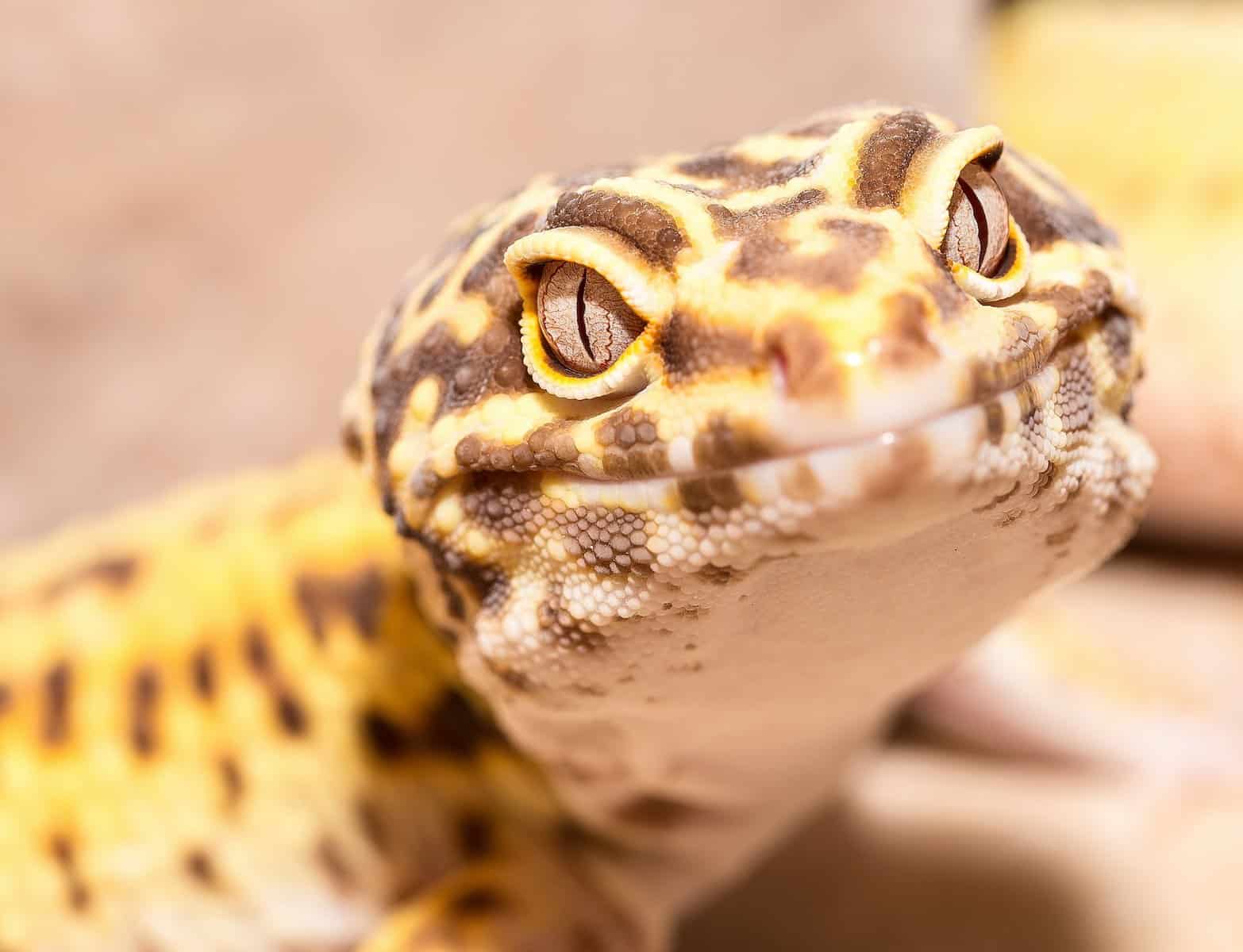
Leopard geckos, as mentioned previously, are known for being especially easy to take care of, and a good argument can be made here that their friendly nature and easygoing disposition helps with that.
They also don’t require all that much cage maintenance, although you should still keep their environment clean just to make sure that they’re living their best life.
With that being said, leopard geckos are nocturnal creatures that are fairly easy to tame and very friendly with newcomers.
They also don’t have the signature sticky toe pads that most other geckos have, so you won’t have to worry about them climbing walls anytime soon either. While on this subject, they also have eyelids which is lacking with most other geckos.
At the same time though, leopard geckos are not prone to biting and they very rarely will attack anything other than their food.
They’re also very slow moving and very vocal which makes them very cute to observe as they tend to flop around slowly while also chirping away asking for more snacks.
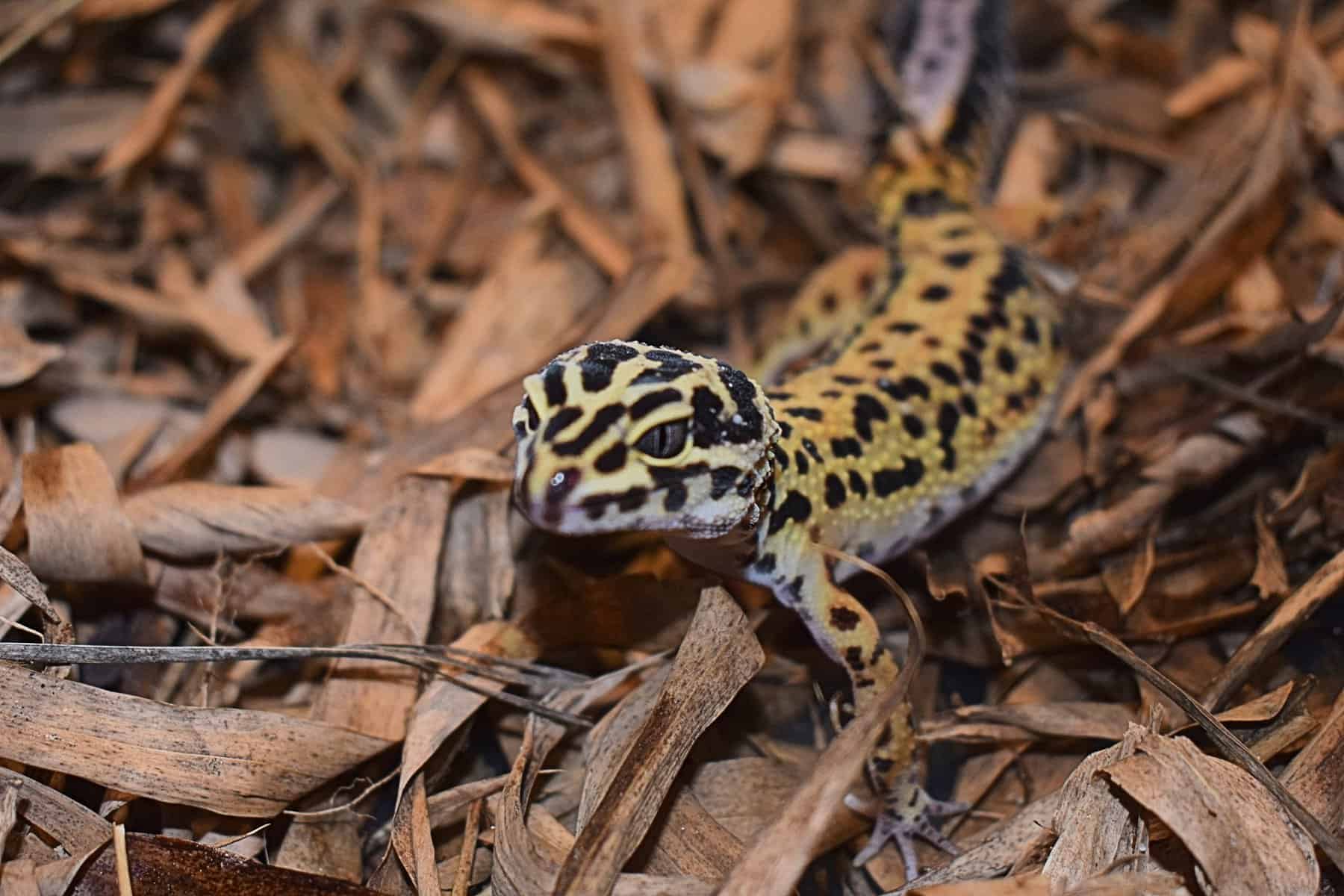
Handling your leopard gecko is always a good way to socialize with it, although do keep in mind that your pet may eventually feel overstimulated and anxious if you fondle it a bit too much.
Geckos will always communicate by waggling their tails, so if they seem to be waving their behinds back and forth slowly then they’re happy, but if they raise it up that’s not a good sign.
This means that your leopard gecko is feeling threatened by something around it and that it’s getting ready to attack. If two of your geckos are lifting their tails then quickly jump in to separate them otherwise they’ll charge at one another and hurt themselves.
While on this subject, if your leopard gecko’s tail is rattling around then it is excited. They will usually do this when they’re excited to eat or when they are getting ready to mate with one another.
If they feel like something’s out to get them and they need to make a quick getaway, your geckos will drop their tails as a defense mechanism. Don’t worry though, it will grow back eventually.
General Facts About Leopard Geckos
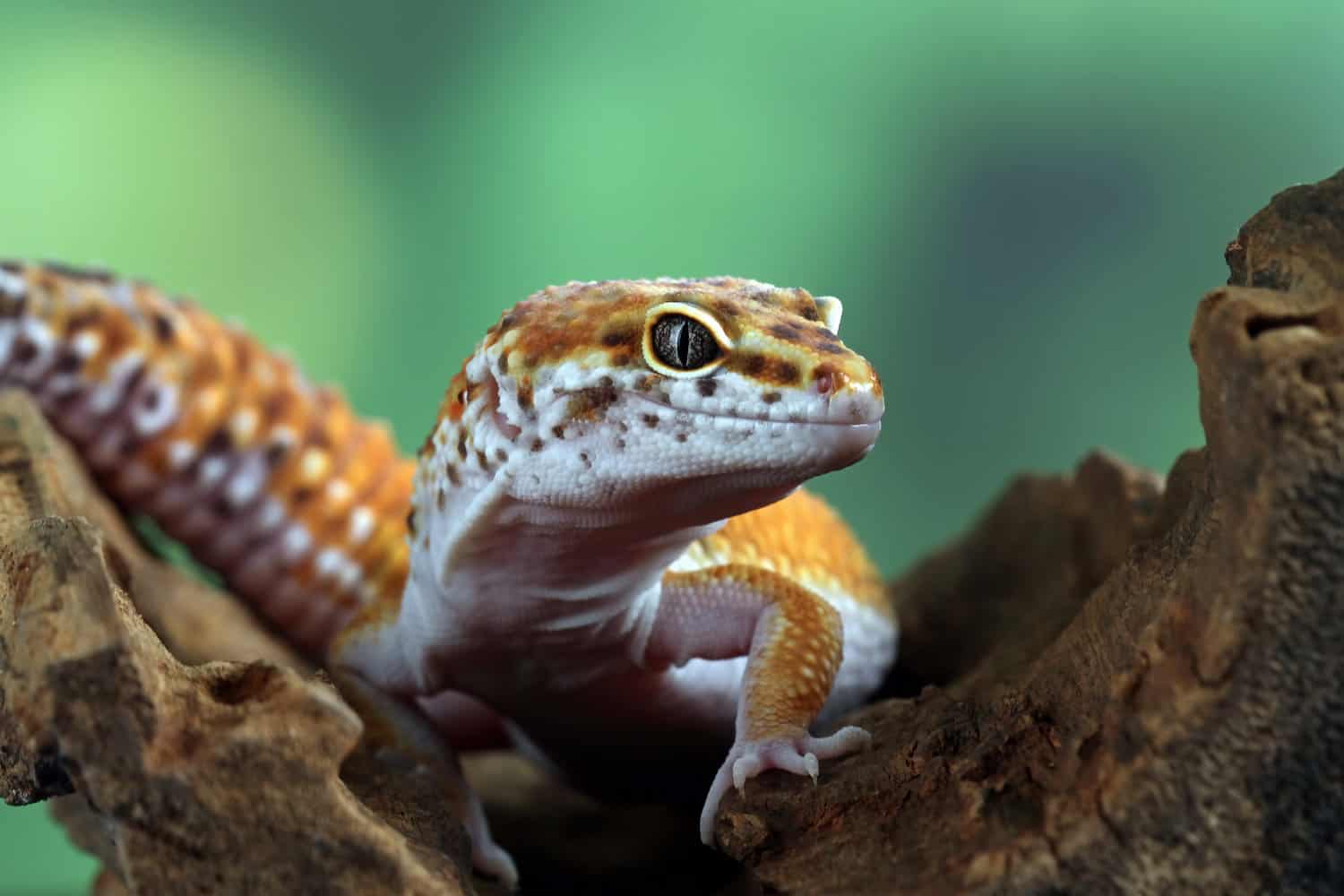
So, in this subsection we will be going over quick and easy to digest facts that will help you better understand your gecko:
- They’re also referred to as panther, desert fat-tailed and spotted fat-tailed geckos.
- Scientifically speaking they are referred to as the Eublepharis macularius.
- For the most part they will not cost you any more than $50 to a maximum of $400.
- They can grow up to be around 6.5 to 10 inches long, although the males tend to be much larger.
- They can get as heavy as 40 to 100 grams each, but again, the males can easily surpass that threshold.
- They can live almost 15 to 20 years in total, although their health typically starts to deteriorate after that first decade passes.
- As far as their diet is concerned, they tend to love consuming crickets, mealworms, locusts, pinkie mice and waxworms.
- They require a minimum 10-gallon tank, although it is recommended that you opt for a much larger one just to make your gecko’s life better.
- As far as the humidity is concerned, you should opt for around 30 to 40% and temperature wise 70 to 85 F is preferable.
- If you like the idea of the leopard gecko but you’re not sure if that’s the right reptile for you, you can always opt for an African fat-tailed gecko or a gargoyle gecko instead.
Leopard Gecko Color Varieties
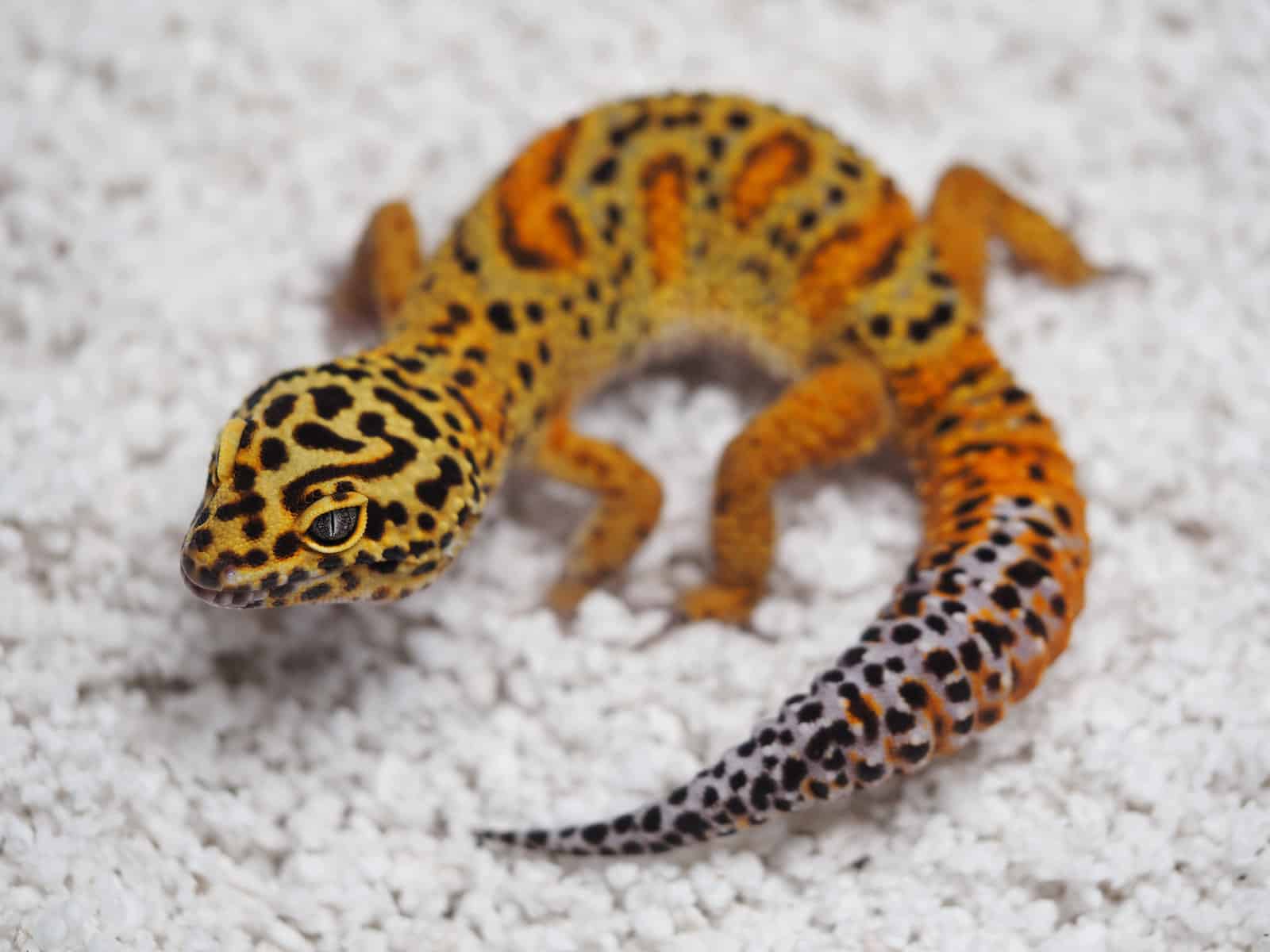
Your gecko can be yellow, lavender, tangerine or white. On top of that your pet can also come with black or chocolate spotting, patching or striping.
You may also come across the occasional albino or melanistic leopard gecko, although these are quite rare on the market and as such, they cost a lot more to buy.
As far as different patterns are concerned, you should know that this is entirely dependent on the individual gecko.
So, some have rosettes, chain-rosettes or solid spotting running across their bodies, while others have stripes and patches which can be spread all over their body erratically.
You can also come across the occasional hypomelanistic morph which only has spotting on the head and tail, although these are very rare.
A Guide to What Leopard Geckos Eat
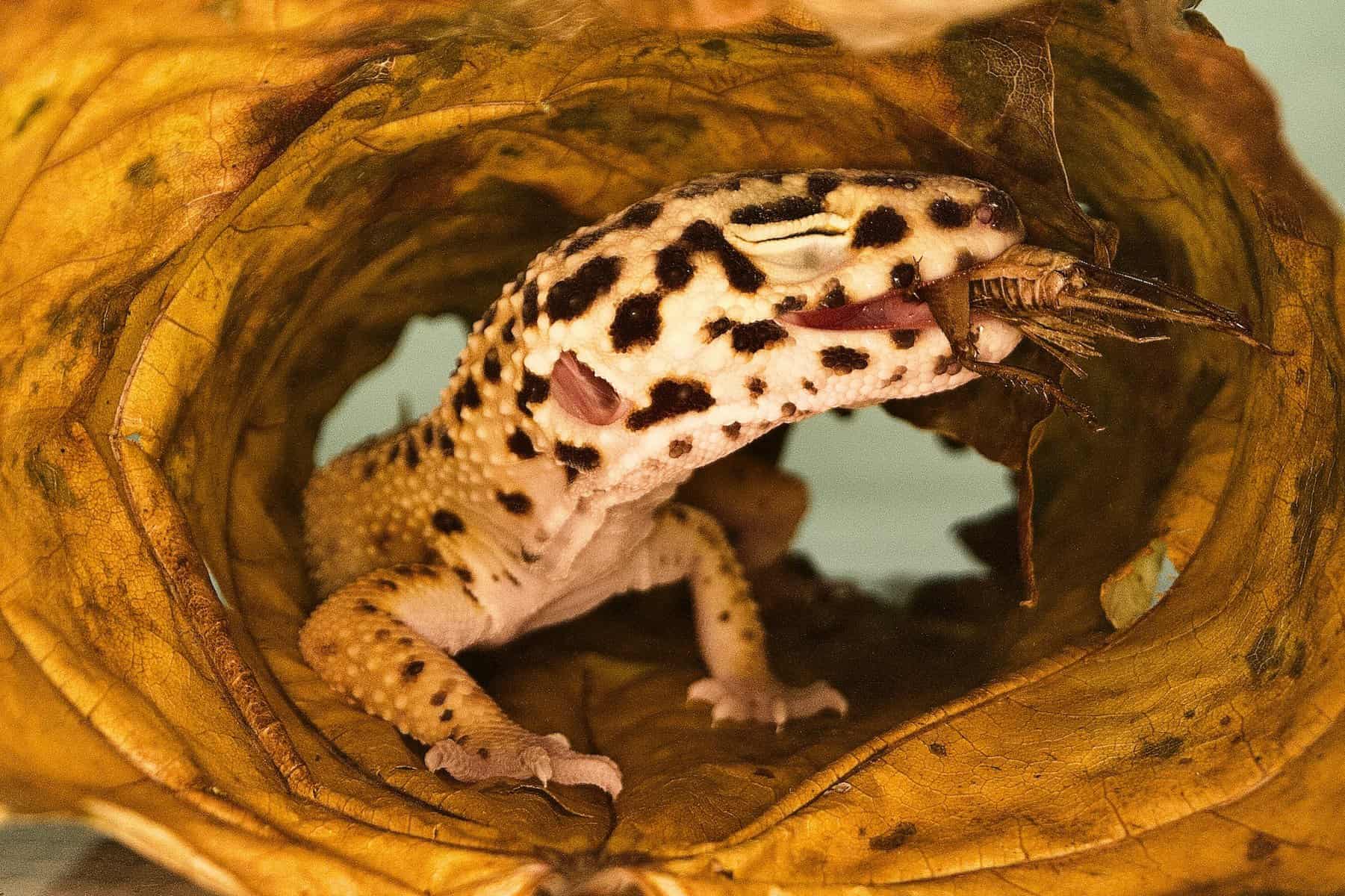
The reason as to why we said that leopard geckos are relatively easy to take care of is the fact that their diet is primarily made up of live insects.
As such, you can expect their diet to consist of mealworms, crickets, superworms, wax worm, Dubia roaches, phoenix worms and small hornworms.
Do try and keep in mind the fact that hatchlings and young geckos can’t consume insects that are larger than the width of their head and so you will need to feed them small insects every other day to make sure they’re happy and well-fed.
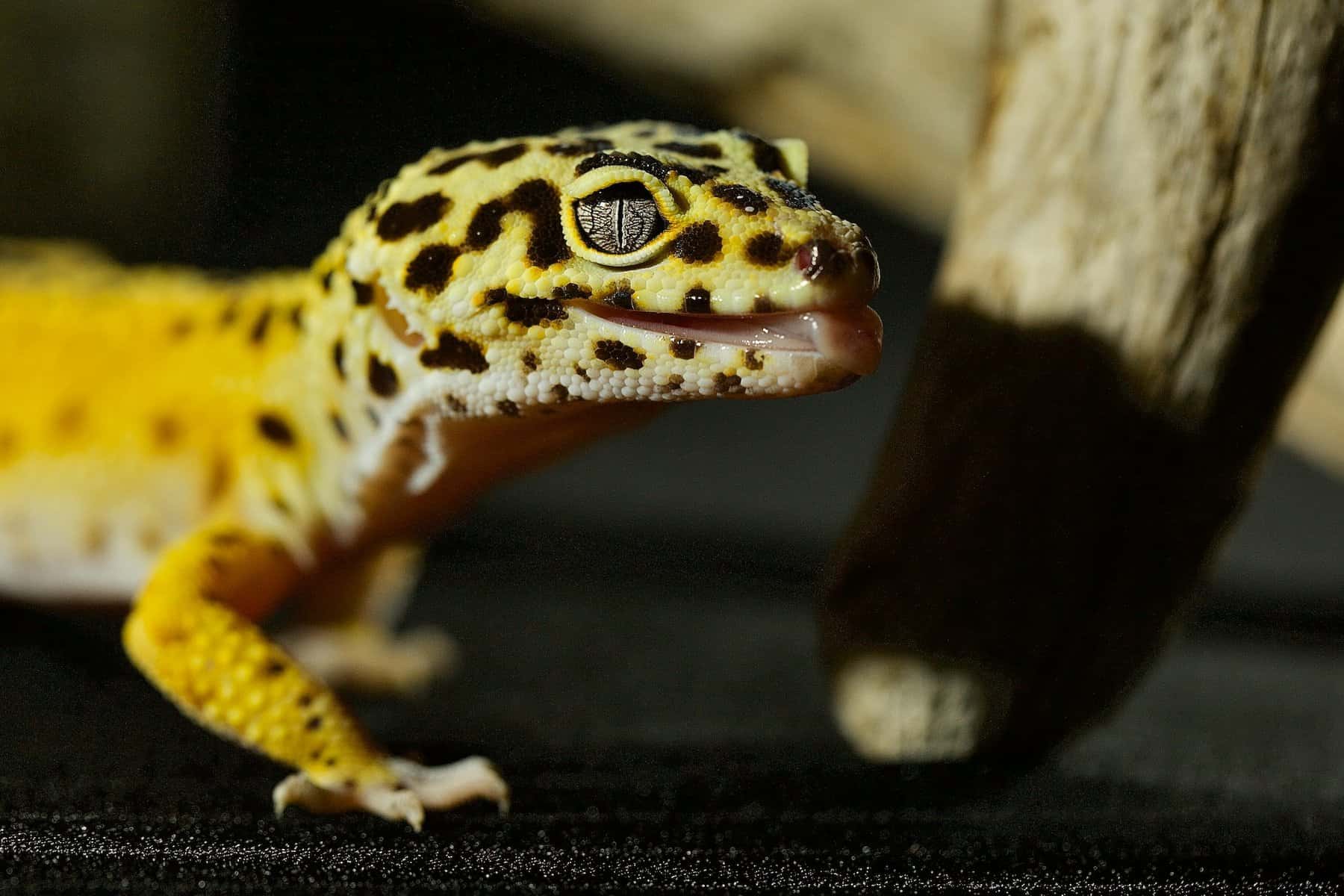
So, here’s a guide on how large the insects should be and how often you should feed your leopard gecko:
- Hatchlings (0 to 6 months old) should be fed every day with one insect smaller than the width between their eyes, any larger and it will classify as a choking hazard for your pet
- Juveniles (6 to 15 months old) need to be fed every other day with one insect that is again, smaller than the width between their eyes
- Adults on the other hand need to be fed every three days, although quantity wise you will need to feed them one insect per inch of gecko to make sure they’re well fed
Your leopard gecko will also need a supplement of calcium powder coupled with vitamin D3 during every meal. We recommend that you dust the insects with these supplements or just gut-load them 48 hours before you feed them to your gecko.
But above all else you need to make sure that the supplement container says “phosphorous-free” otherwise your pet’s health will be in danger.
Another positive when it comes to raising leopard geckos is the fact that children can also participate in the feeding process. Just powder up the insects and then let your children be the ones to drop them down into the enclosure.
As far as their drinking needs are concerned, they’ll get most of the water they need from their food supply, although you can also add a shallow water dish filled with fresh water if you want to pamper your little lizard friends.
Just make sure that the dishes aren’t too deep otherwise your gecko can easily fall in it and drown if they’re not careful.
Leopard Gecko Habitat and Cage
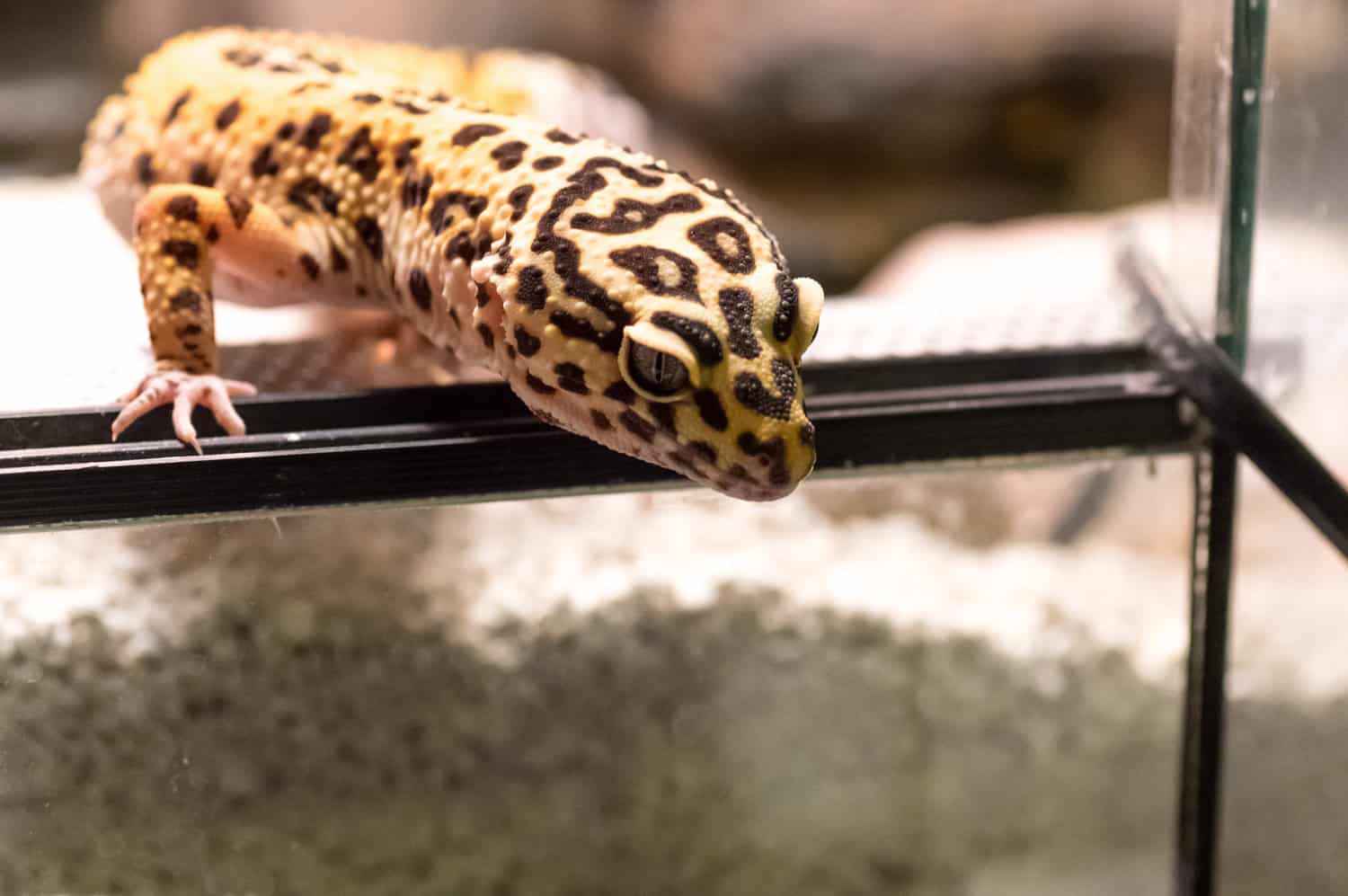
As mentioned previously, if you want to own a leopard gecko pet you will need to invest into a 20-gallon long vivarium.
Do keep in mind though that that’s the bare minimum sized habitat, we usually recommend going for a slightly larger wooden or glass vivarium.
You can actually save up on money by raising your leopard geckos in the same 20-gallon tank that the adults use, although if you plan on housing one male and two females for breeding purposes you should instead go for a 40-gallon tank.
If you want to house more than one lizard at a time though, you will need to make sure that every one of them has their very own hideout area in the tank so as to avoid any unnecessary territorial conflicts.
At the same time, we recommend that you prepare a cooler side, a warmer side and a hot side in your tank so that your reptiles can manage their temperature on their own by moving to the area they prefer.
We also recommend that you place coconut fiber or sphagnum moss around the chamber in order to help with shedding.
You won’t need to worry about bathing your leopard geckos though as long as they have soaking bowls and micro-humidity chambers.
You can also consider adding in varying levels to the cave as well as different branches and rocks to make your pets feel more at home in their own enclosure.
Lighting and Heating
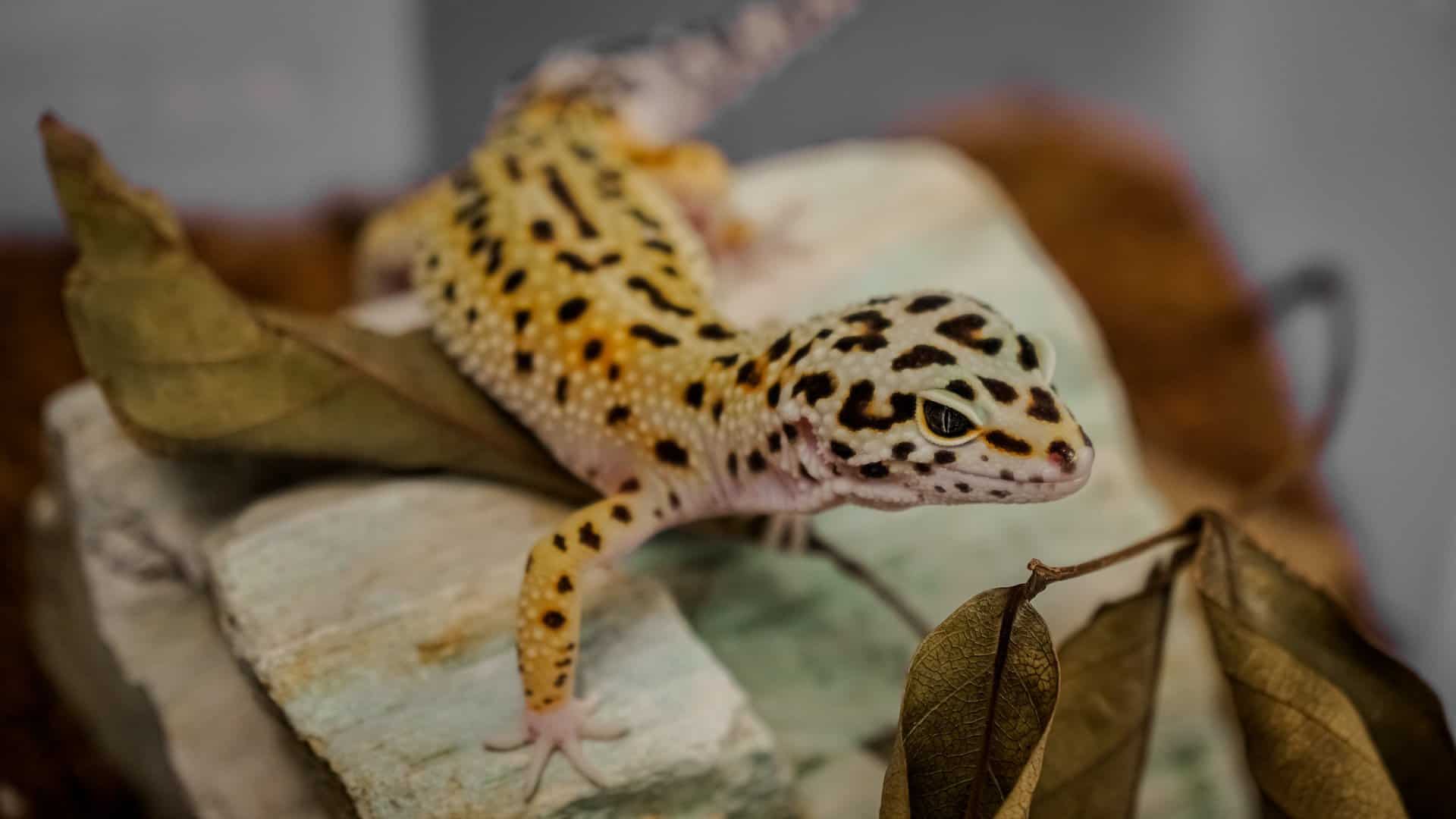
If you do plan on getting yourself a leopard gecko though, you will need to invest in a UVB light for a basking area during daytime as well as a ceramic bulb that they can use during nighttime to relax.
One side of the tank should reach temperatures o around 90F while the cooler side should be at a constant 75F.
Since they are nocturnal, your leopard geckos will need you to shut down their lighting in the evening and you should keep that light off all night long.
While you can go to around 70F or so during nighttime, we don’t recommend that you drop any lower than that.
We also recommend that you add in an undertank heating pad to make sure that the tank is properly heated at all times.
Humidity wise you should go for around 30-40% or so, which shouldn’t be too difficult as long as you add a soaking bowl in the enclosure.
The soaking bowl needs to be quite large, although it shouldn’t be large enough to the point where the water can reach above their ears.
Substrate
If you want a relatively inexpensive substrate you can always just use reptile carpet, paper towels or even newspapers for that matter.
But if you can afford it and you want to make the enclosure as good as possible for your little reptiles you can always just use aspen shaving, cypress mulch or coconut fiber.
At the end of the day though this shouldn’t be too much of a concern to you, just use whichever of those is more convenient for you as a substrate.
The reptile carpet will need to be cleaned on a daily basis, and on top of that it will need to be deep cleaned every month with bleach or you can just throw it out and get a brand new one instead, depending on how worn out it is.
How to Handle Your Leopard Gecko
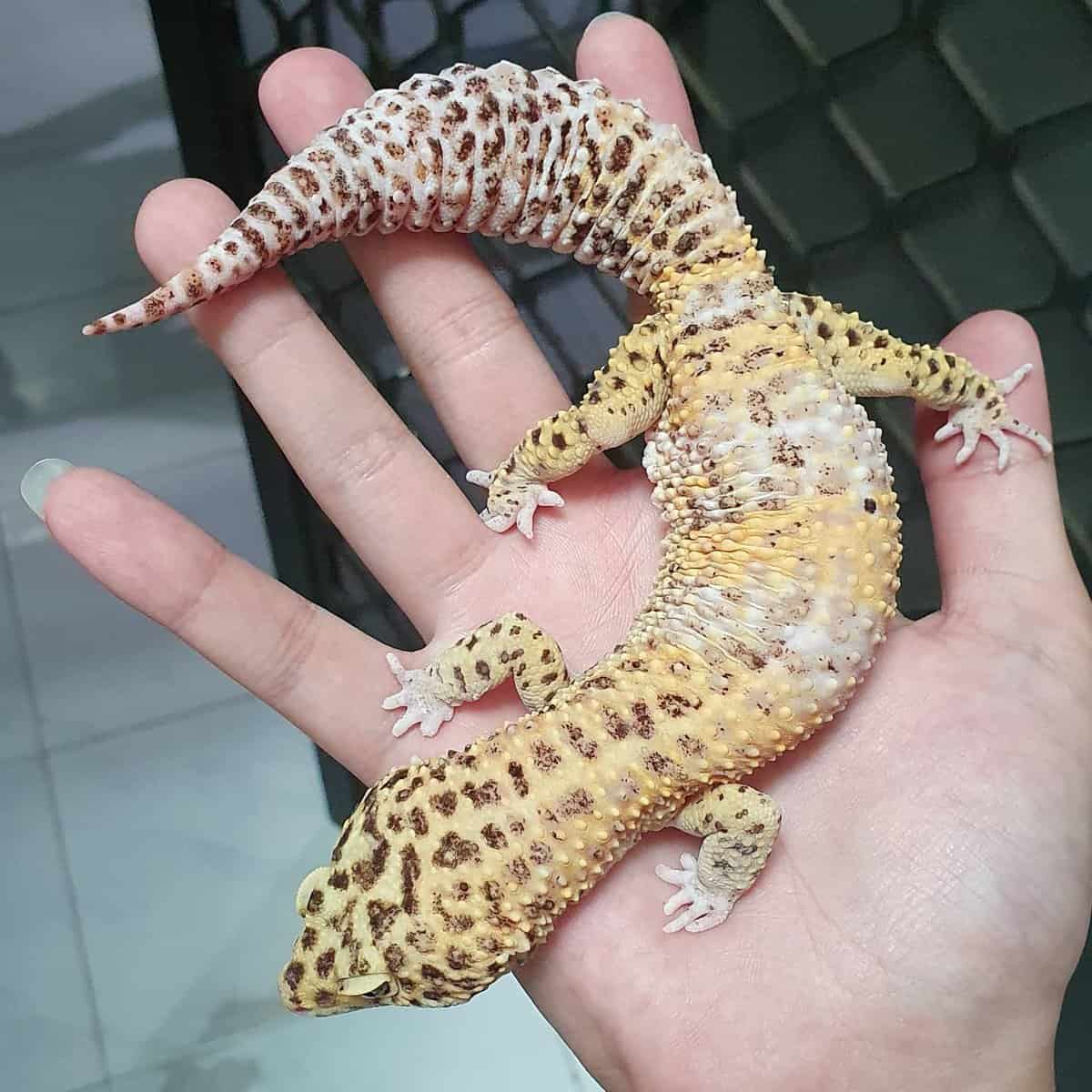
For the most part, Leopard Geckos absolutely love climbing and exploring around the enclosure, they can’t get enough of it.
This is why it’s very important that you invest thoroughly into a habitat that has branches and rocks for your pets to go over.
They love to be carried around and handled, although they do have their limit so don’t expect them to enjoy you doing so for well over an hour or so.
At the same time, try to keep in mind the fact that the leopard gecko’s tail has a mind of its own, so don’t ever grab it by its tail as it will quickly rip off and your lizard will get scared very quickly.
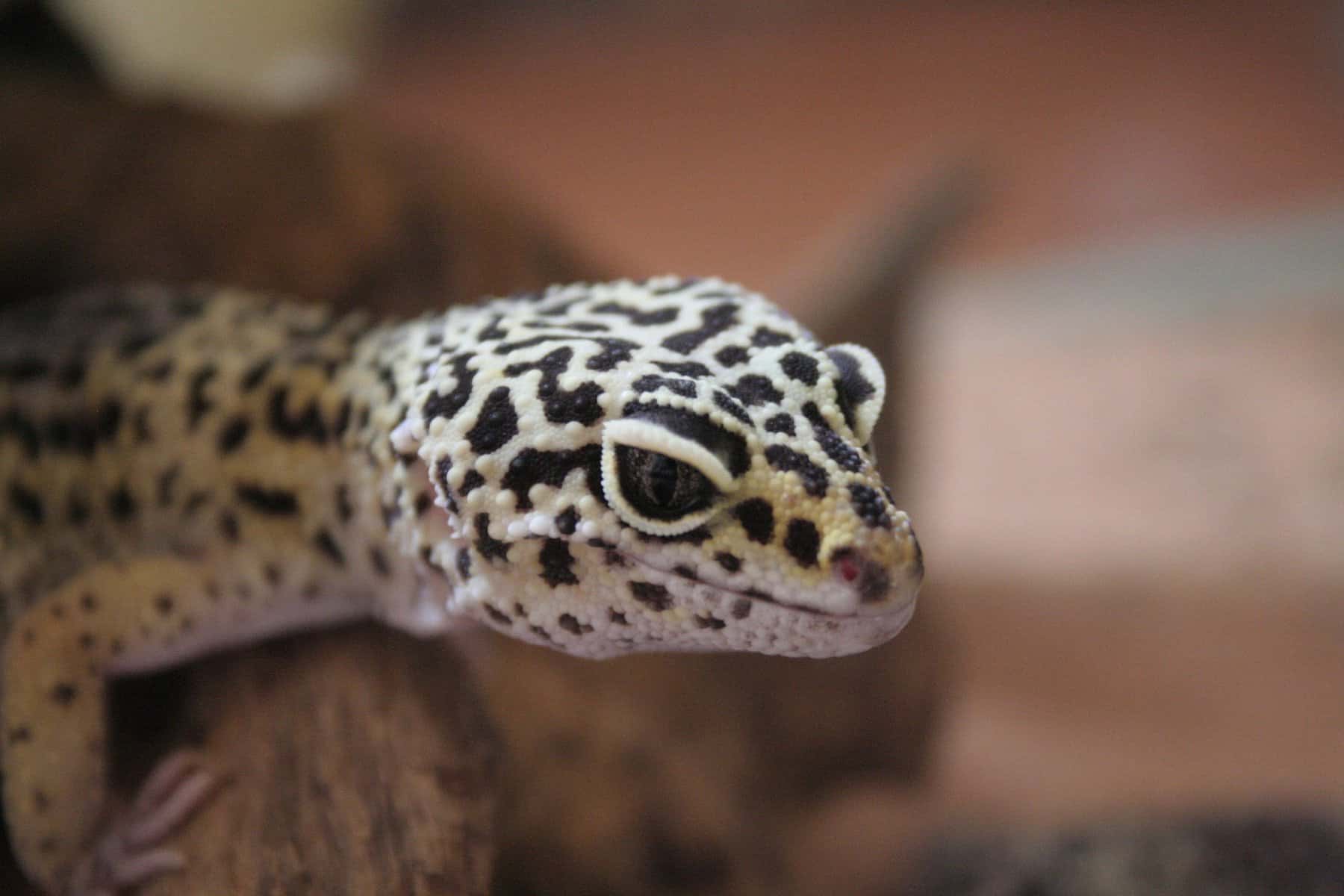
So, when handling, try to keep in mind the following:
- Put down your hand in a palm up position and gesture to your lizard that you want them to climb on your hand
- If they refuse to then pick them up by the torso and place them in your palm. Start this process with your hand on the floor and slowly raise your hand higher and higher as your gecko starts trusting you more and more
- Make sure to support his legs and tail as you lift them up slowly, if they’re a bit jittery then slowly put your hand back on the ground and let them get off
- If their tails are waggling and they seem to be making a lot of high pitch noises then they’re most likely enjoying being handled
- Start walking around with them in your palm, but as you do so try not to make any sudden movements because your pet can easily get startled
- Do this for five minutes at a time every day and slowly increase the duration until you can tell that you’ve bonded with your leopard gecko
How Much Do Leopard Geckos Cost?
Most of the common leopard geckos out there will not cost you any more than $50, although if you want to get yourself a specific color morph you will need to pay significantly more.
This can either be well worth it or it can be a bit of a waste of money depending on how you see it. But if you’re willing to spend upwards of $400 for the sake of getting a unique looking pet gecko, definitely go for it.
At the same time you may want to look into the breeder you’re purchasing your gecko from because there are a lot of breeders out there that deal with sickly or genetically deformed leopard geckos.
Avoid these people like the plague because if you do end up buying a gecko from them chances are that your gecko will not be healthy and instead it will die very quickly no matter how much money and effort you’ll put into raising your pet.
Conclusion
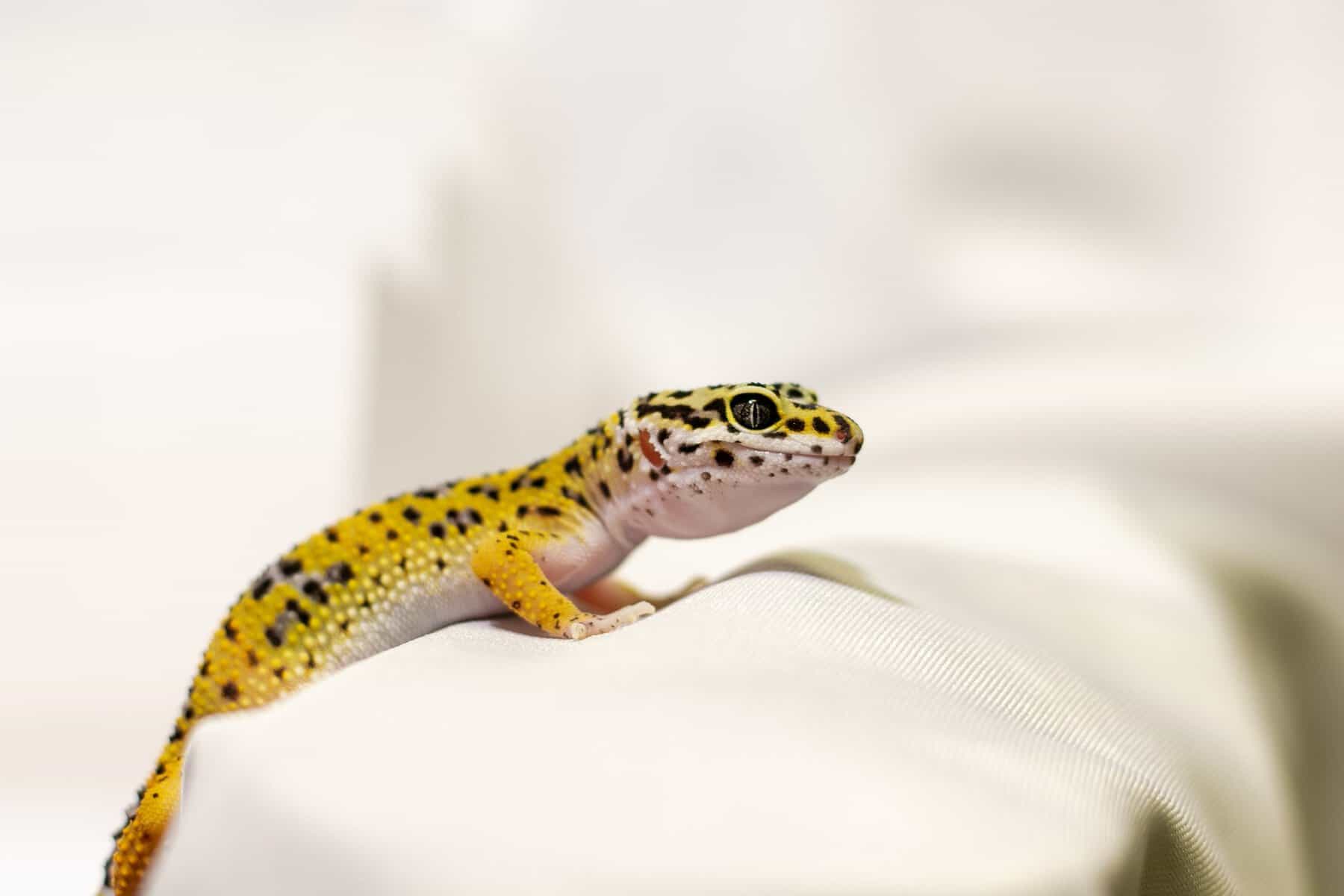
It’s no wonder that the leopard gecko is one of the most popular pet choices out there for first-time reptile owners.
They are just so friendly and easy to take care of, and better yet, they are very beautiful and unique looking creatures that will never bore you in the slightest.
Maintenance wise they’re not burdens in the slightest, and if you treat them properly they are sure to hop in your palms every time you try to pick them up.

